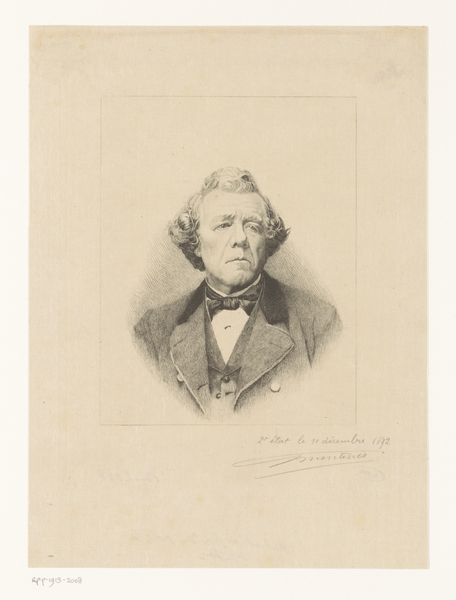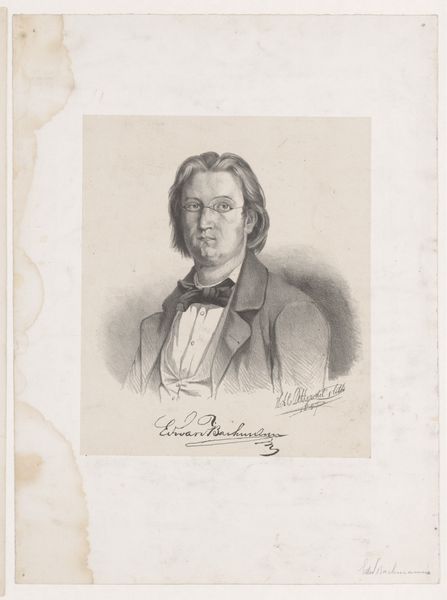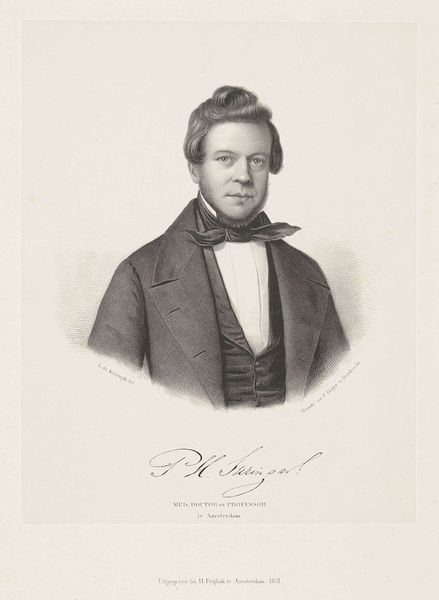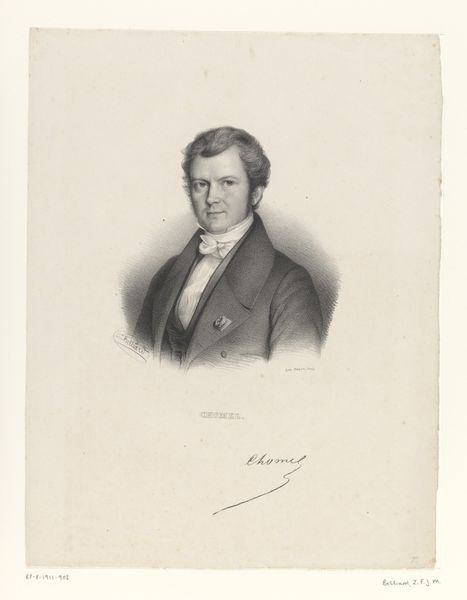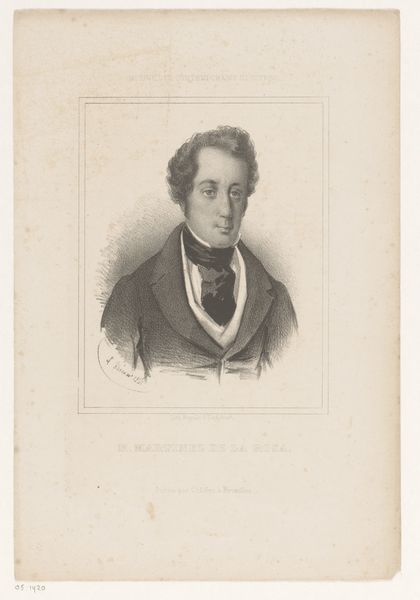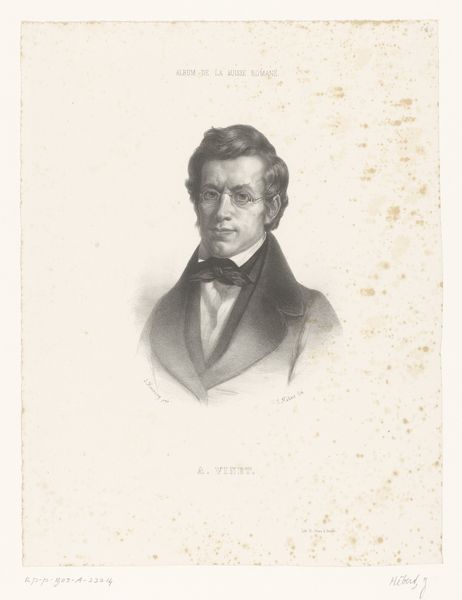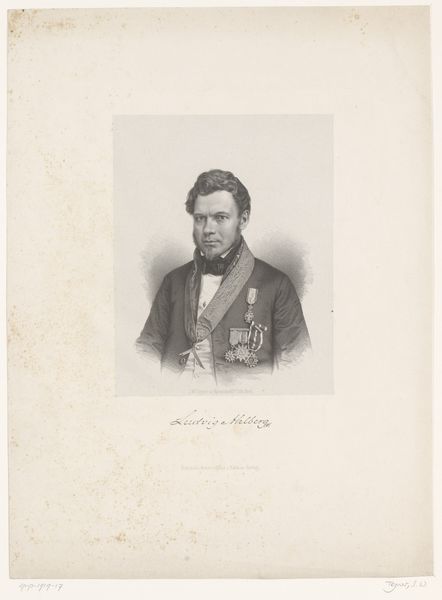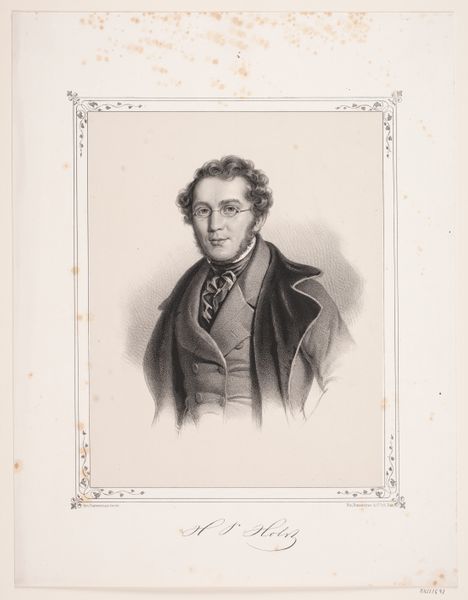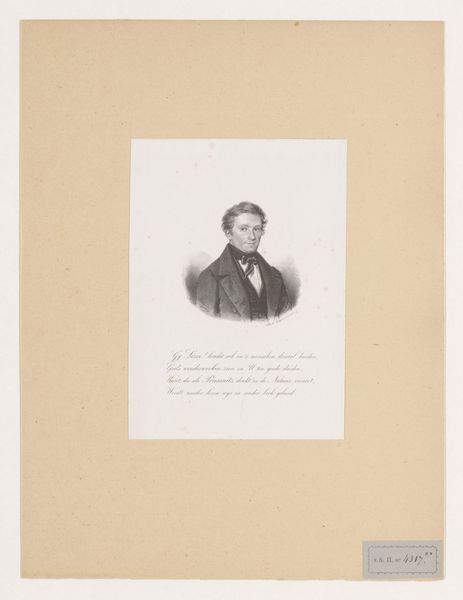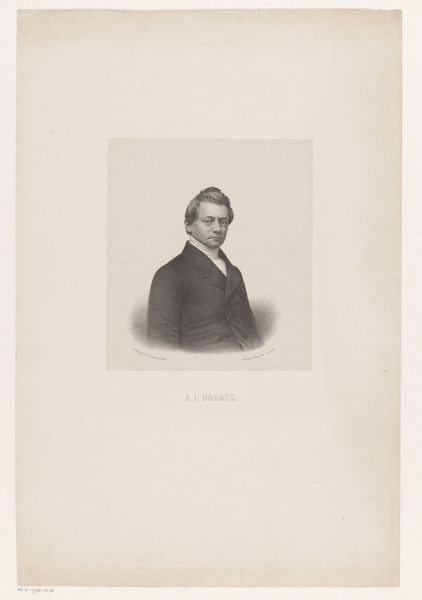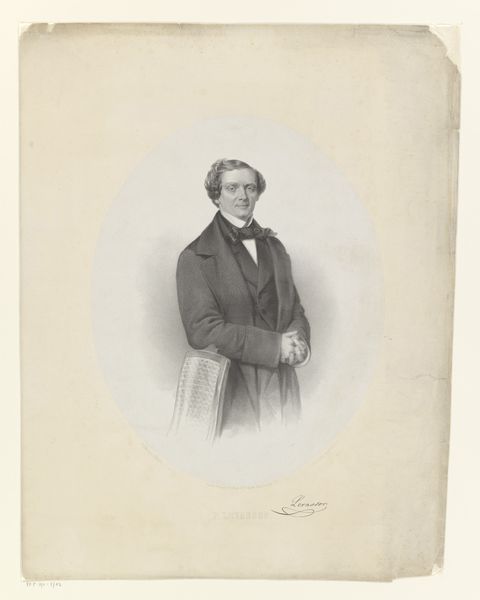
Dimensions: height 175 mm, width 109 mm
Copyright: Rijks Museum: Open Domain
Editor: This is a print from the Rijksmuseum, titled "Portret van Pieter Hendrik Suringar," made sometime between 1836 and 1886 by Dirk Jurriaan Sluyter. It's an engraving on paper, quite small I think, but what strikes me is the sitter’s steady gaze. What can you tell us about its imagery? Curator: Well, portraits always speak volumes about status, but consider what an engraved portrait *meant* in the 19th century. Before photography democratized image production, engraved portraits like this one acted almost like secular icons. They fix a person’s likeness for posterity. Editor: So, almost like a… visual legacy? Curator: Precisely! And who was chosen for this honor? Note the sharp detail of the face, set against the softer, almost dissolving edges. It draws your eye directly to his expression. What does that tell you? Editor: It's definitely trying to capture something specific about his character…strength perhaps, intelligence? It's not just a neutral record. Curator: Exactly. Look too at the clothing – the carefully knotted bow tie. Clothing conveyed not just social status, but moral character too! It becomes part of the visual rhetoric. What “virtues” does the overall image communicate to you? Editor: Thinking about it that way, I see respectability, maybe a touch of academic sternness... almost like this image is designed to create a certain memory. Curator: An expertly crafted visual memory! These images shaped reputations. And in some ways, this careful construction of persona continues in portraiture even today, wouldn’t you say? Editor: That's true! It makes me look at even contemporary portraiture in a totally different way. Thanks!
Comments
No comments
Be the first to comment and join the conversation on the ultimate creative platform.
